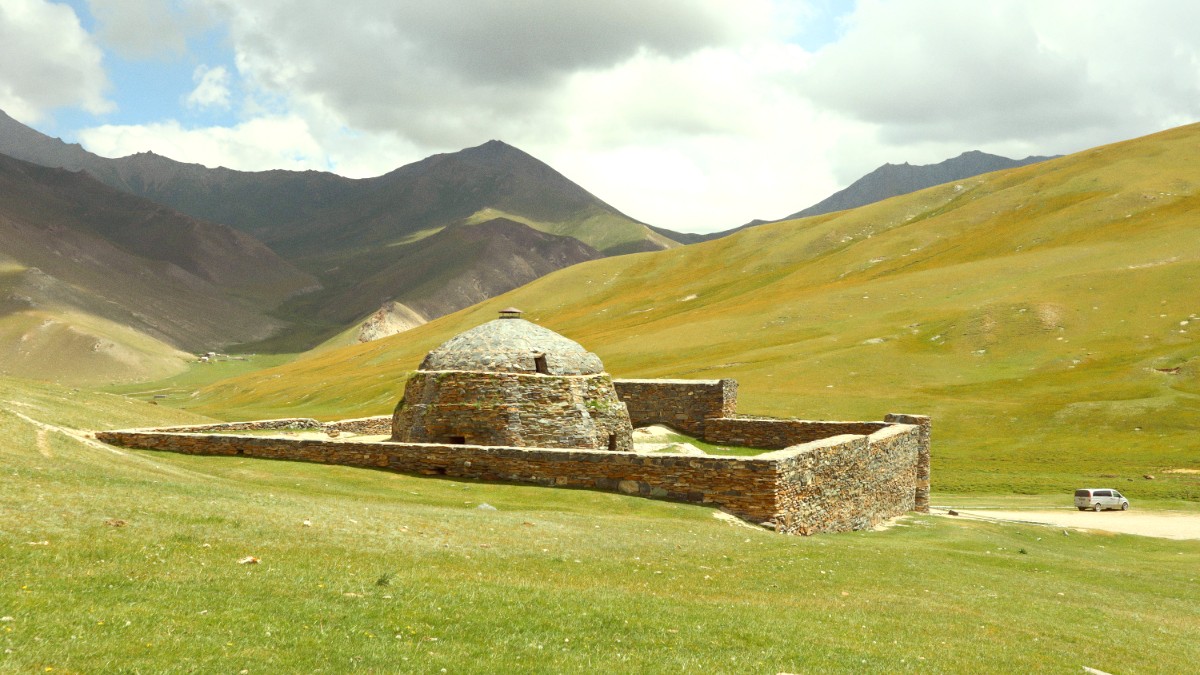
Central Asia
The region experiences a continental climate with distinct seasons.
Spring (April-May) and Autumn (September-October) generally offer mild temperatures, making them comfortable periods for sightseeing. Summers (June-August) are hot and dry, especially in desert regions. Winters (November-March) are cold with common snow.
Optimize your travel dates based on your planned adventures:
Cultural Sightseeing (Uzbekistan's Silk Road Cities): Spring (April-May) and Autumn (September-October) offer the most pleasant weather for exploring architectural wonders. Trekking and Outdoors (Kyrgyzstan, Tajikistan): June through September is the window for high-altitude hikes, horse trekking, and yurt stays, when mountain passes are clear of snow. Desert Exploration (Turkmenistan): Spring and Autumn provide tolerable temperatures for visiting desert attractions. Summers are too hot.
Most stringent policy
A letter from a registered tour operator is typically needed for visa application.
Possible, but approval presents a challenge and is not guaranteed.
E-visa & Permit
Many nationalities, including US, EU, UK, and Australian citizens, obtain an e-visa online.
A Gorno-Badakhshan Autonomous Region permit is often needed for Pamir Mountains travel. Obtain it during e-visa application or separately.
Often Visa-Free
Many nationalities (EU, UK, Canada, Australia, Japan, South Korea, UAE) enjoy visa-free entry for 30-90 days.
US citizens obtain an e-visa or, in some cases, a visa on arrival. Apply online via the official E-Visa Portal.
Many nationalities, including US, EU, UK, Canada, Australia, Japan, and South Korea, enter visa-free for 30 days. This makes short trips or transit relatively easy.
A very lenient visa policy. Citizens from a large number of countries, including the US, EU, UK, Canada, Australia, Japan, and South Korea, receive visa-free entry for 60 days. Some nationalities receive 90 days.
Needs validity for at least 6 months beyond your intended stay. Many countries require passports to have 2-3 blank pages for stamps.
Specific dimensions may be needed for visa applications. Carry a few physical copies.
Complete these accurately for countries requiring a visa.
A requirement for Turkmenistan visas, and sometimes for Tajikistan.
Immigration officers may request these documents.
Managing your finances is straightforward in Central Asia with a bit of planning. Costs vary significantly based on your travel style and the countries you visit. Uzbekistan and Kyrgyzstan generally offer better value for money than Kazakhstan. Turkmenistan is more expensive due to the tour operator requirement.
Local currencies include Uzbekistani Som (UZS), Kazakhstani Tenge (KZT), Kyrgyzstani Som (KGS), Tajikistani Somoni (TJS), and Turkmenistani Manat (TMT). US Dollars (USD) are widely accepted for exchange at banks, official exchange booths, and some hotels. Euros (EUR) are also commonly exchanged.
Tipping is not as deeply ingrained as in Western countries, but it receives appreciation for good service.
Approximate costs in USD per night/item.
| Category | Budget Range (USD) | Mid-Range (USD) | Luxury (USD) |
|---|---|---|---|
| Hostel Dorm Bed | $8-20/night | N/A | N/A |
| Guesthouse Double | $20-40/night | $40-80/night | N/A |
| Hotel Double | N/A | $50-100/night | $120-300+/night |
| Street Food/Snack | $1-3 | N/A | N/A |
| Basic Restaurant | $5-15 | N/A | N/A |
| Mid-Range Meal | N/A | $15-30 | N/A |
| Fine Dining | N/A | N/A | $30-70+ |
| City Bus/Metro | $0.15-0.50 | N/A | N/A |
| Short City Taxi | $1-5 | $1-5 | $1-5 |
| Shared Taxi | $5-20 (intercity) | $5-20 (intercity) | N/A |
| Train (economy) | $10-50 | $10-50 | N/A |
| Domestic Flight | $40-150 | $40-150 | $40-150 |
| Major Site Entry | $2-10 | $2-10 | $2-10 |
| Group Guided Tour | $10-50 | $10-50 | N/A |
| Private Guide | N/A | N/A | $50-150+/day |
Central Asia is generally safe for tourists, but awareness and preparation assist with a smooth journey.
Ensure MMR (measles, mumps, rubella), DTP (diphtheria, tetanus, pertussis) are current.
Commonly suggested for most travelers to developing regions, especially when eating street food.
Seek advice well in advance (4-6 weeks prior) to discuss additional recommendations like Hepatitis B, Rabies, or Japanese Encephalitis based on your travel style.
Prevention is for a healthy trip.
Diarrhea/Stomach upset is the most common travel ailment. Practice good hand hygiene, drink only sealed bottled water, and avoid uncooked street food from questionable sources. Peel fruits and vegetables yourself. Carry an anti-diarrhea medication.
Altitude sickness is relevant in mountainous regions (Kyrgyzstan, Tajikistan). Ascend gradually, stay well hydrated, and avoid alcohol/heavy exertion at high altitudes. Sunburn/dehydration are risks in hot, dry summers. Protect yourself with hats, sunglasses, and high-SPF sunscreen. Carry and drink plenty of water.
Insect bites are possible. Use repellent. Pack common over-the-counter cold/flu remedies.
Major cities like Tashkent, Almaty, and Bishkek have private clinics with better standards. English-speaking doctors are difficult to locate outside international clinics. For serious medical emergencies, evacuation may prove necessary.
Typically 101 (Fire), 102 (Police), 103 (Ambulance). In Kazakhstan, 112 serves as a general emergency number.
Tap water is generally not safe for drinking. Rely on sealed bottled water. For rural areas, a portable water filter or purification tablets are a choice.
Central Asia is generally considered safe for tourists. Violent crime against tourists is rare.
Awareness of regional hazards supports travel safety.
The region lies in a seismically active zone. Familiarize yourself with basic earthquake safety procedures (drop, cover, hold on).
Common in mountainous areas, especially during heavy rain or snowmelt (spring/early summer). Check local conditions if planning mountain travel.
Be prepared for very hot summers (dehydration, sunstroke risk) and very cold winters (frostbite, hypothermia risk).